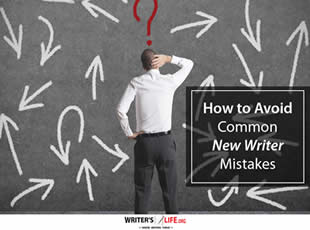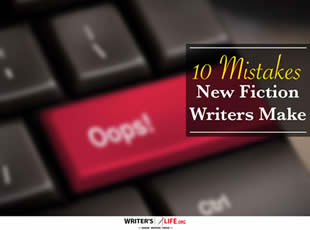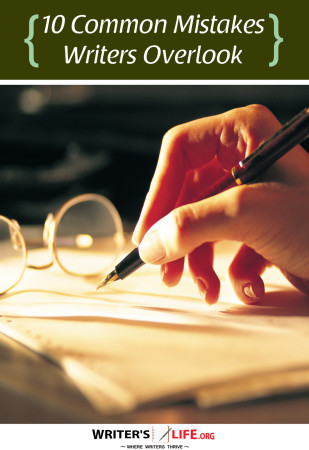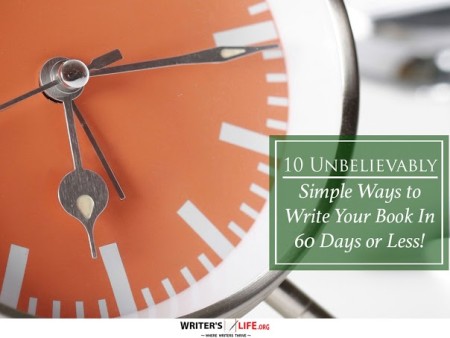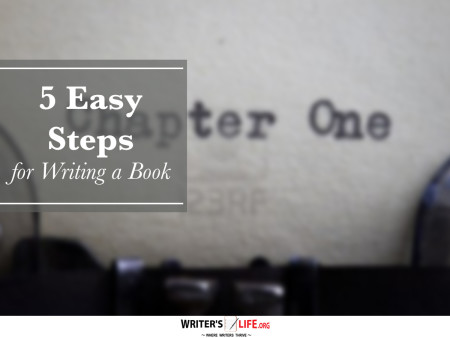- How To Tackle Jealousy In Creative Writing
- Common Submission Mistakes
- How To Stop Your Blog Becoming Boring
- The One Thing Every Successful Writer Has In Common
- How To Make Yourself Aware Of Publishing Scams
- Why Almost ALL Writers Make These Grammar Mistakes At Some Point
- 5 Tips For Authors On How To Deal With Rejection
- Top Mistakes to Avoid When Writing a Novel
- How to Avoid Common New Writer Mistakes
- 10 Mistakes New Fiction Writers Make
10 Storytelling Mistakes That Weaken the Ending

Storytelling mistakes can derail even the most captivating narratives, especially when they weaken the ending that leaves a lasting impression on your readers. Crafting a resonant ending is a delicate art, requiring careful avoidance of narrative pitfalls that can leave readers unsatisfied. In this article, we'll delve into ten common storytelling errors that often undermine even the most promising tales.
Avoiding Clichés: A Subtle Narrative Pitfall
One common narrative pitfall is relying too heavily on clichés. While familiar tropes can offer guidance, overusing them tends to lead to predictable and uninspiring endings. Imagine reaching the story's climax only to find the oft-seen twist or an expected hero’s victory. Instead, aim for originality without straying too far from what makes the genre beloved. Steering clear of clichés doesn't mean you can’t employ certain tried-and-true themes; just be sure to introduce your own creative twist.
Clichés can often become storytelling errors when they're left unchecked. This is particularly important if you're writing within a specific genre with well-known tropes. Readers will appreciate a fresh take on an old theme, one that surprises and delights rather than causes eye rolls.
Rushed Resolutions: Weak Storytelling Conclusions
It’s tempting to quickly wrap up narratives to maintain pacing, but rushed resolutions often lead to weak storytelling conclusions. Imagine you’re enjoying a gourmet meal, savoring each bite, only to have dessert thrown at you before you’re ready. Your audience deserves to enjoy a satisfying, well-developed resolution. Take the time to thoughtfully conclude all storylines and character arcs.
This doesn't mean dragging out your ending with unnecessary plot twists. Balance is key. Give your characters and audience time to reflect on the journey, ensuring narrative closure mistakes don’t leave lingering questions that feel more like plot holes than artistic choices.
Ignoring Character Development: A Major Story Ending Problem
Stories thrive on character development. If character arcs remain underdeveloped, your story ending problems will be hard to ignore. Characters should evolve throughout your story; their final actions should reflect this journey. By failing to deliver believable character growth, you risk a flat and uninspiring finale.
Characters' choices during your story's climax should feel inevitable yet surprising — the result of everything they've experienced. When characters end up where they began without substantial change, it signifies missed storytelling opportunities and leads to unsatisfactory narrative closure mistakes.
Forgetting the Theme: A Subtle Finale Storytelling Error
Your story's theme should resonate throughout, subtly leading to its conclusion. Forgetting to reinforce this theme can become a finale storytelling error. Think about how each plot point and character decision ties back to the overarching theme. It’s a bit like composing a symphony — every note must work together to create harmony.
Incorporating your theme into the ending doesn’t mean being heavy-handed. Instead, ensure your story naturally guides the audience to reflect on its message, enhancing the emotional impact and avoiding storytelling blunders. A well-integrated theme can powerfully reinforce your story’s message, amplifying its emotional resonance.
Overcomplicating Plot Lines: A Common Narrative Ending Mistake
Complex plots can add intrigue, but overcomplicating them often leads to narrative ending mistakes, confusing your readers. When too many loose ends need tying up, your audience might feel overwhelmed. Keeping your plot streamlined ensures a clearer, more satisfying conclusion.
While intricate narratives are engaging, they should ultimately converge towards a singular resolution, rather than branching into chaos. Remember, clarity often trumps complexity. Clear, purposeful plotting paves the way for impactful storytelling without leading to weak storytelling conclusions.
- Avoid introducing new characters or subplots near the end.
- Ensure each subplot contributes to the main plot.
- Revisit key plot points to ensure they align towards your ending.
Neglecting Reader Expectations: A Serious Storytelling Blunder
Your readers have journeyed with you through every twist and turn, building expectations as they invest in your narrative. A serious storytelling blunder is undermining those expectations with an unsatisfactory or disconnected ending. While challenging conventions can be rewarding, total disregard for built-up tension or thematic promises risks alienating your audience.
However, this doesn’t mean you shouldn’t surprise your readers. Delivering on what your narrative has promised involves a balance — meeting expectations while weaving in the unexpected. This approach prevents storytelling errors and supports cohesive, crowd-pleasing finales.
Lack of Emotional Payoff: A Critical Weak Storytelling Conclusion
Your ending should provide an emotional payoff, offering closure to the journey. Without it, you risk a weak storytelling conclusion that leaves your audience emotionally flat. Those initial chapters captivated them through intrigue or empathy. Ensure the emotions cultivated throughout see a meaningful resolution.
Think of your story as a rollercoaster, with emotional peaks and valleys. Each twist should lead to an ending that aligns with the emotional journey you've built. This prevents moments of narrative closure mistakes, ensuring your story lands with both intellect and emotion.
Unresolved Plot Holes: Obvious Narrative Pitfalls
Leaving plot holes unresolved is one of the more obvious narrative pitfalls. When logical gaps emerge, they can undermine credibility and storytelling integrity, pulling readers out of the immersive world you’ve crafted. Address inconsistencies head-on, ensuring clarity and coherence in your narrative.
Readers are keen observers and relish knitting together the nuanced picture you’ve painted. Evade storytelling errors by threading loose ends into a cohesive whole. Remember, a well-integrated story rewards your readers' attention and enhances their overall experience.
Underestimating the Importance of Setting: A Underlying Storytelling Mistake
Often, writers focus solely on characters and plot, overlooking the setting’s pivotal role. Underestimated settings can become an underlying storytelling mistake when they aren’t utilized in climactic moments. Your setting can act as a silent character, reinforcing tone, mood, and theme.
Consider how the setting in your narrative’s climax enhances the stakes or resolves the tension. Do the stormy skies mirror the protagonist’s turmoil? The setting can deepen the narrative impact, making your story more immersive and the ending more poignant.
Instead of using your setting merely as a backdrop, engage with it actively to enhance storytelling layers. By doing so, the world you’ve created becomes as vital to the story's conclusion as the characters themselves.
Frequently Asked Questions About Storytelling Mistakes
Q: How can I avoid common storytelling mistakes in my writing?
A: Focus on developing a clear plot, believable characters, and a coherent theme. Continuously seek feedback to catch errors early.
Q: Why do storytelling mistakes often occur at the end of a story?
A: Endings require tying together multiple elements, which can lead to mistakes if not carefully planned and executed.
Q: Can a weak storytelling conclusion be fixed?
A: Yes, revisiting the narrative structure, character arcs, and theme integration can help refine and strengthen the ending.
If you're serious about growing your author career, don't miss out on these free tools and templates built specifically for writers. Access all 7 free resources here.



















